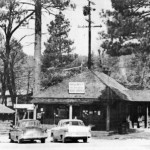Despite the popular concept that national politics, especially in the hallways of the U.S. Congress, is clogged with the goo of partisanship, the U.S. Senate’s Committee on Energy and Natural Resources defies that image.
Last week, the committee, led by Chair Lisa Murkowski (R-AK) and ranking member Sen. Maria Cantwell (D-WA), held a hearing on draft legislation entitled the “Wildfire Budgeting, Response and Forest Management Act.” They quickly acknowledged the previous work of Sens. Mike Crapo (R-ID) and Ron Wyden (D-OR).
Both houses of Congress have been grappling with ways to adjust the funding for wildfire suppression costs for several years. According to the U.S. Forest Service, funding to fight wildfires has grown from 16 percent of the agency’s total budget in 1995 to more than 50 percent in 2015.
As these costs grow and exceed appropriated levels, the Forest Service must borrow funds from other programs such as recreation, acquisition and other management programs.
During the hearing, Robert Bonnie, the U.S. Department of Agriculture’s undersecretary for Natural Resources and Environment, stated, “… in order to cover the 10-year average cost of suppression in FY 2017, more than $237 million will be reallocated away from accomplishing work such as forest restoration projects that would help reduce the risk of future fires.”
In her opening statement, Murkowski addressed this issue, saying, “This bipartisan discussion draft is an important first step toward ending the destructive practice of fire borrowing and restoring healthy, fire-resistant forests. I look forward to working with my colleagues on this critical effort as the legislative process advances.”
Senators from both sides joined her in advancing the draft legislation to the Senate floor. Cantwell, the ranking member of the Energy Committee, said in her opening statement, “I’m ready to call fire borrowing, ‘The Great Debate.’ This senator is agnostic as to how we solve it, but I do have a couple of principles in general.
“We cannot rob Peter to pay Paul. The Forest Service needs both the money to fight the fires and the money dedicated to do fuel reductions. So we have to produce a draft out of here that gives them the ability to do both,” Cantwell added.
The draft bill proposes Congress fund the agencies’ fire needs at the beginning of the fiscal year. The funding level would be enough to cover 100 percent of the average annual cost of firefighting over the past 10 years. This could be adjusted in catastrophic years. Disaster funding would be the source for these additional monies. Also, in low fire years, agencies could use the excess funding for prevention projects.
However, while bi-partisanship was visible in the hearing, Bonnie, the administration’s witness, was not completely satisfied with the proposed solution to fully fund the 10-year average cost and eliminate the need to borrow funds.
He argued that fully funding the fire costs within the Forest Service’s total budget would still reduce funding for other programs. This was based on the agency’s estimate that the 10-year average will continue to grow and could approximate two-thirds of the budget in 2025.
The draft bill also would authorize the use of drones, or unmanned aircraft systems, during wildfires. The intention of these tools is to improve the ability to scout fire lines, identify escape routes and track ground resources.
Another provision authorizes $500 million over seven years to provide assistance to at-risk communities to invest in proven programs that reduce wildfire risk, property loss and suppression costs.










